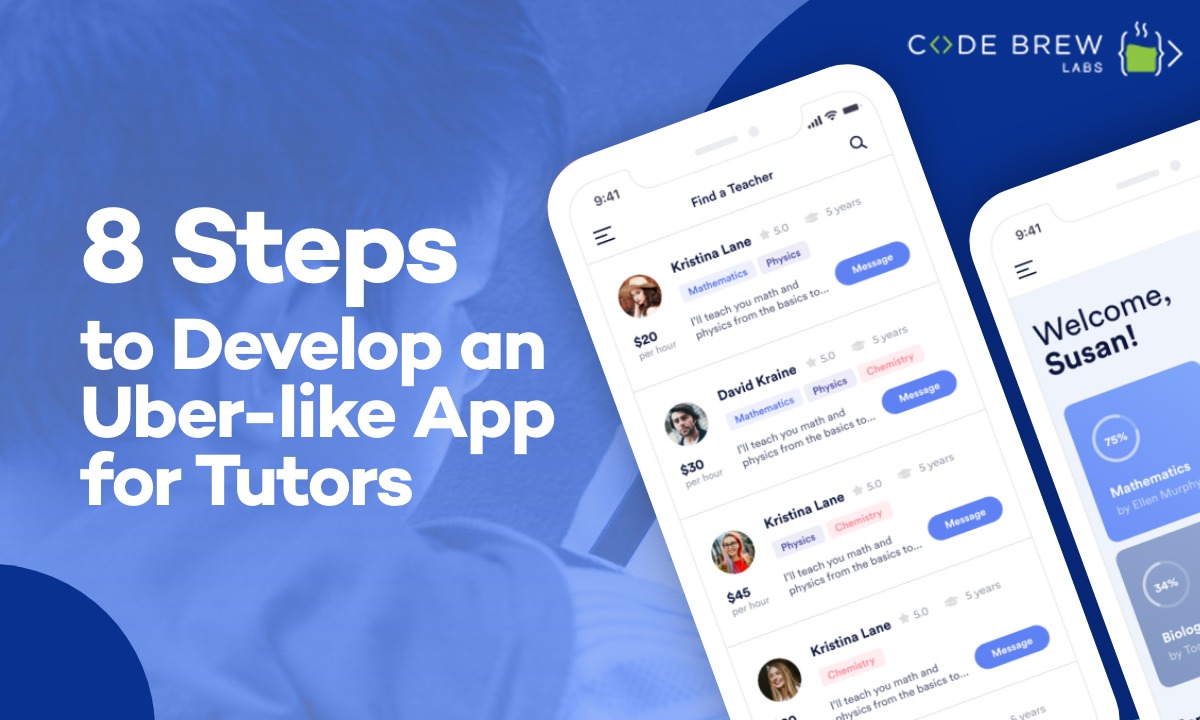
We live in a technological world where almost everything is available at the tip of our fingers. From fresh meals to an instant ride, we can get things delivered to our doorsteps by merely tapping on our screens.
Table of Contents
Amidst the popularity of these on-demand cabs and food, the demand for on-demand tutoring services has started making waves. The reason is the ease and convenience it offers. Adding to that, the increasing popularity and rise in a sudden need to shift to remote education. All thanks to the COVID-19 pandemic.
The result? The education sector is undergoing a major transformation with on-demand tutoring apps finding more takers.
Well, you can think of it as an Uber for tutors where you’ll be hiring tutors and coaches instead of cabs. The app lets you search and connect with the tutor who best fits your learning needs based on your preferred geographical area. And since the whole idea is about on-demand service, you can take the lessons as and when you need, online or offline.
What’s more? A majority of such apps are comprehensive, offering a range of courses – from science to languages – on a single platform. For example, Chegg Tutors, Whiz Tutor, TutorMe, Tutree, etc. It drives in more learners as they don’t have to switch apps for different courses.
At the same time, you may also come across niche tutoring apps that offer coaching for a particular subject. Take Yup for instance, which provides on-demand math tutoring for K-12 grades.

Let’s understand its functionality with the below pointers:
For an Uber-like on-demand app for coaches to be successful, it must contain the following characteristics:
An on-demand tutor app doesn’t just cater to your learning needs but offers a host of benefits. The primary factors contributing to its immense popularity are:

Considering the growth in technology and the need for remote education, investing in an Uber for tutors app seems viable. Your app will work as a bridge between students and teachers. While it will fulfil the continual need for quality education for students from wherever they are, it would give more exposure and earnings to coaches.
Such aspects are only encouraging the market for online tutoring to grow at a rapid pace. In fact, this sector is projected to grow by $157.03 billion between 2021-2025, proving it worthy of investments.
Sounds great. But how can you develop an on-demand app for tutors & coaches? What does it take to get it right?
Here are the steps you should follow to get started in the right direction:
Research is the key to successful mobile app development. Hence, make sure to spend your time drawing up buyer personas, user demographics, and patterns for application usage. You could study the existing players in the market and also conduct surveys. The research findings will help you arrive at clear conclusions about your target market and your primary offerings.
Wireframing your on-demand tutor application would help create a solid user-centric design. You could also use storyboards to simplify user actions. A wireframe would contain everything – from the first screen (entry point) of your app to the last, along with navigation functions. It helps craft a logical flow of how things would work and connect with each other.
Are the technologies, back-end infrastructure, and tools chosen by you offering excellent functionality? Will those be scalable enough? To answer these questions, analyse the latest yet relevant technologies in your niche market. It will help ensure whether you’ve made the right choice for your on-demand, online tutoring app. Public API database and open-source codes also prove to be of great help.
A prototype is essential to extracting valuable insights about the working of your app and gathering early user feedback. It is a working version of your mobile app with all the necessary features, built-in less time at minimum costs. It’s nothing but an MVP (Minimum Viable Product). You could release it for a limited user base to capture their response, based on which, you can plan your future moves.

The next step is to design the user interface (UI) and the user experience (UX) of your app. It will have the actual layouts and shapes, with graphics, that your target users would see and use while in the app. This phase is about bringing to life what you had created in the wireframe stage with all the more clarity.
While the UI represents an app’s front-end, its back-end is made up of codes and scripts. For optimised development, it is vital to follow the standard SDLC model that would lead you to attain a practical, effective, and engaging mobile app. The key is to strike the right balance between the designing and development processes for desirable results with minimum errors.
All your app development efforts could go in vain if you don’t test your mobile app. Testing is done in phases and will help you eliminate any operational or technical glitches, if any. And it’s not just about checking the app’s functions. It would also include testing device compatibility, uptime, platform compatibility, and actual data usage.
After obtaining positive results from the testing phase, it is time to deploy your on-demand app for tutors on the app stores. Keep an eye on the app’s functionality, user reviews, consistent maintenance, and support services. Remember, you should deploy your app only when you are 100% assured of its performance and market-fit requirements.
If the above steps seem too overwhelming, you can always hire a leading app development company like CodeBrew to handle the technicalities. It could cost anywhere between $20000 to $25000 based on the features & functions, but the investment would be worth it.
